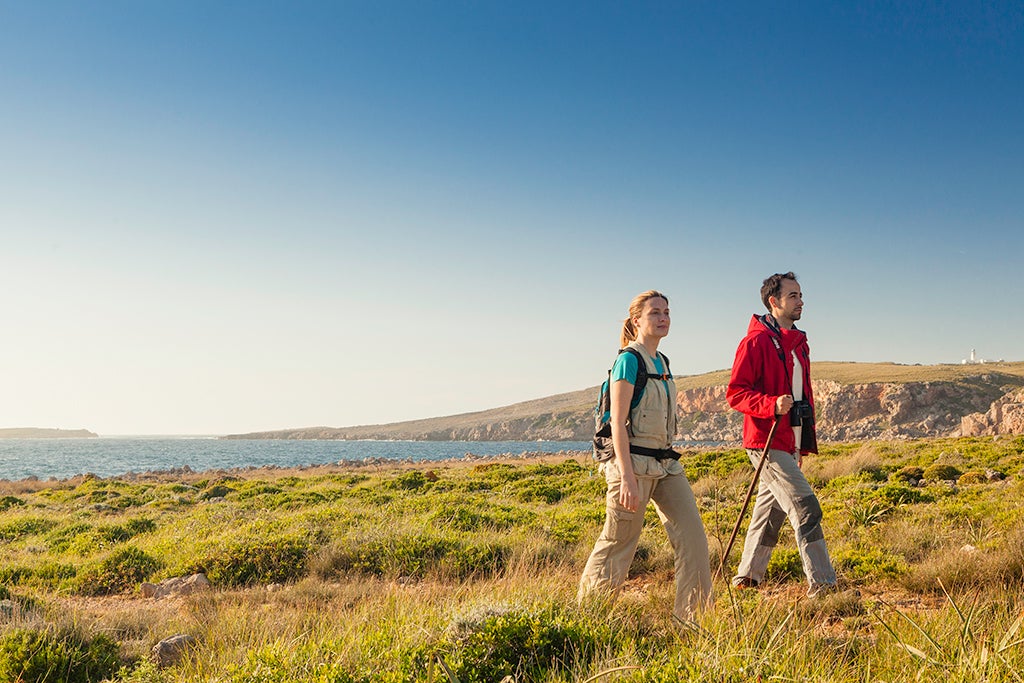Discover Menorca this spring
With nature, culture and adventure, Gerald Gilbert finds Menorca in full bloom

As a summer destination, the sun, sea and sand mecca of Menorca is well loved by generations of Britons since the dawn of the package holiday, but as I discovered a few years ago, it also makes an excellent place for a spring break. The cooler – but still agreeably warm – weather means that visitors can take better advantage the increasing number of physical activities being catered for on this, the second largest of three main Balearics, as well as its surprisingly abundant flora and fauna. For the Menorcan landscape – designated a Unesco Biosphere Reserve – is at its best in springtime.
“It’s more birdsong than Pete Tong,” as Lonely Planet memorably compared Menorca to its party-loving neighbour Ibiza and hikers, cyclists and horse-riders striking out on the now completed Cami de Cavalls, a path that encircles the island, may spot migrating booted eagles, red kites, Egyptian eagles and ospreys gliding above wildflower meadows. Particularly glorious stretches of countryside can be found in the Parc Natural de S’Albufera des Grau and around Cap de Favaritx, with its weirdly lunar topography. The Chelsea Flower Show eat your heart out.
Bicycles can he hired in the main towns, and Menorca’s 3,000 kilometres of paths, tracks and roads are all accessible on a mountain bike – while the terminally competitive can always enter the Tour of the Lighthouses race each May – a 210km ride that culminates in an ascent up Menorca’s only serious elevation, Monte Toro.
If you prefer hooves, then there are various stables dotted around. Menorca Horse Riding, near the capital, Mao, is a well-established outfit offering half-day excursions for about 60 Euros.
The Mediterranean will be just calm and warm enough for bathing or exploring by sea kayak, but the natural lagoon of Fornells, with its sailing and windsurfing schools, offers a more secure and dependably-tepid waters, while for those who prefer pottering around ancient ruins, Menorca can claim the world’s greatest concentration of places of prehistoric culture, mostly from the Talaiotic period that existed during the Iron Age.
The largest cluster of these so-called ‘navetas’ (burial chambers), ‘talaiots’ and ‘taulas’ can be found in the south-east of the island around Sant Lluis, as can a healthy collection of gastronomic restaurants for which the island is becoming increasingly well-known. Pick of the bunch near Sant Lluis are Pan y Vino (0034 971 15 02 01) and Biniarocca (0034 971 15 12 50) – both with lovely gardens, if the weather is clement enough for outdoor dining.
Subscribe to Independent Premium to bookmark this article
Want to bookmark your favourite articles and stories to read or reference later? Start your Independent Premium subscription today.

Join our commenting forum
Join thought-provoking conversations, follow other Independent readers and see their replies